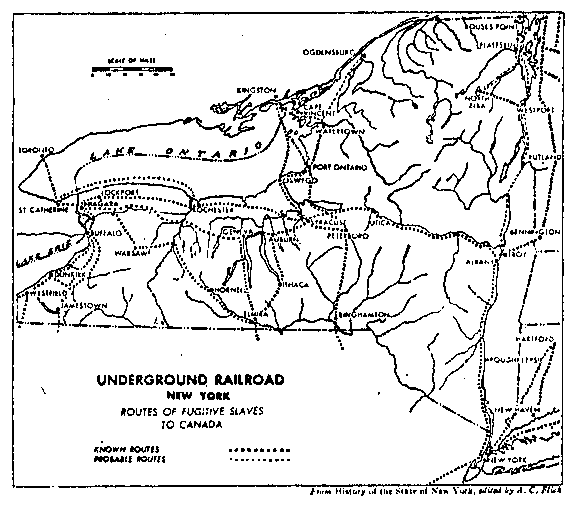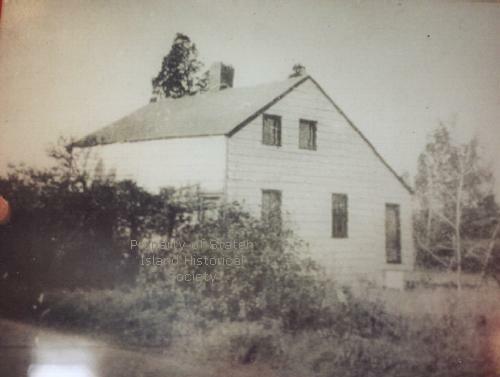 A map of possible Underground Railroad routes from “History of the State of New York,” edited by A.C. Flick.
A map of possible Underground Railroad routes from “History of the State of New York,” edited by A.C. Flick.
Although much has been written about the Underground Railroad, Staten Island’s place in this remarkable history is still unclear. Its proximity to Canada, as well as its low population, suggests that it was a likely stop for fugitives as they made their way north, but academics are still debating, warranting further exploration of this fascinating topic.
Located to the west of Prince’s Bay, on Staten Island’s South Shore, is Sandy Ground, the oldest continuously inhabited free black settlement in the United States. According to city records Sandy Ground — originally an area in the Westfield district and now in Rossville — was where Captain John Jackson bought land in 1828, the first recorded purchase of land by a freed black man on Staten Island.
 An early school located in Sandy Ground. Photo courtesy of the Sandy Ground Historical Society.
An early school located in Sandy Ground. Photo courtesy of the Sandy Ground Historical Society.
Staten Island quickly became known for its welcoming spirit, and many freed slaves followed Captain Jackson’s lead. Some have speculated that Jackson may have played a significant role in the Underground Railroad, ferrying slaves across the Kill Van Kull waterway aboard the boat he owned and operated. Another possibility as a Staten Island stop on the Underground Railroad is the Zion African Methodist Episcopal Church. The church, built in 1850, was the center of the town and had a major role in shaping the community. Today it’s known as the African Methodist Episcopal Zion Church, and still plays a critical role in community life.
Due in part to its beginnings, Sandy Ground is still home to many of the descendants of those original settlers, though few of the original houses still exist. One home, designed in 1906 by renowned architect Stanford White, was built for Isaac Harris, a member of White’s household staff. It is said the architect drew up the plans as a tribute for his service. Harris’ home on Bloomingdale Road is one of only about 12 of the original old homes still standing in the community.
The Sandy Ground Historical Society, located at 1538 Woodrow Road, has preserved the neighborhood’s history. There you can view their rich collection of photographs, letters, quilts, and other artifacts. Highlights include a rare surviving can of Tetter Salve (a beauty product manufactured by legendary Harlem businesswoman Madame C. J. Walker), the bill of sale for a 14-year-old girl sold on the island, and a letter from W. E. B. DuBois (one of the cofounders of the NAACP). The museum is open Tuesday-Thursday, and Sunday from 1 – 4 p.m. The society also sponsors several annual events, including Family and Friends Day in June. There are plenty of reasons to make your way to Sandy Ground and add your own theories to the great Staten Island Underground Railroad debate.
Businesses Mentioned Above
[blankslate_pages id=”d53a0808fdd058″ type=”card” show_photo=”true” utm_content=””][/blankslate_pages]

